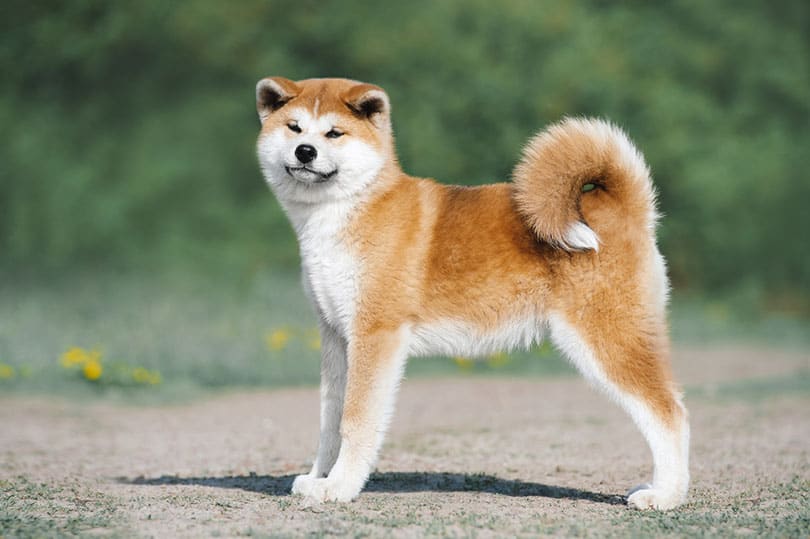Depending on their tail length, dogs have between 319 and 321 bones in their body. This number is consistent regardless of a dog’s size. A tiny Yorkie has the same number of bones as a Great Dane; it’s just that the sizes of the bones are different. Humans, in contrast, only have 206 bones.
The Number of Bones in a Dog’s Body
The reason that dogs have more bones than humans is due to how they move. They have four legs and four paws, each moving independently and supporting a dog’s body weight. There are also bones designed for protecting internal organs and bones to hold muscles that enable dogs to run, jump, stop, and quickly change direction.
Regardless of a dog’s breed or size, they all have the same basic anatomical structures and the same number of bones. For example, all dogs walk on their toes and have compact feet. They also have flexible forelegs attached to the body by a single muscle. A dog’s hind legs are more rigid than the front legs and contain a stifle (knee joint) that connects the tibia, femur, and patella.
The structure of a dog’s skeleton can be divided into three sections: axial, appendage, and visceral. The axial portion is the central part of the skeleton and includes the rib cage, sternum, neck, head, and spine. The appendage section makes up the legs and feet. The visceral section has all the tiny bones, like those in the inner ear.

What Is the Difference Between Human and Dog Bone Structure?
A dog’s skeleton structure is similar to that of a human, with a few differences.
The bones of a human and a dog are the same, but their size and proportions vary. The bones in the arm are the best example of this variation. A dog’s front legs have the same bones as a human arm, and the rear legs are the same as human legs. However, the canine upper leg is the equivalent of the human lower leg, while the canine lower leg is the equivalent of a human hand or foot.
Dog bones are denser than human bones due to the fact that they weigh less and are more compact. The skull is also different. Human skulls are bigger and sit vertically on the neck. Canine skulls sit horizontally while their nose protrudes outward.
Dog Head Shapes
While every dog breed has the same bone structure, the same number of bones, and the same anatomical features, the one area where dog breeds differ is in the shape of their skull. There are three different skull shapes present in dogs:
- Brachycephalic dogs have wide skulls with shortened or flat muzzles. Examples of brachycephalic dogs include Bulldogs, Frenchies, and Pugs.
- Dolichocephalic dogs have long, narrow heads. Examples of dolichocephalic dogs include Greyhounds, Whippets, or Afghan Hounds.
- Mesocephalic dogs have a skull where the back of their head is wider than their muzzle. Mesocephalic breeds include Labradors, Golden Retrievers, Dalmatians, Beagles, and Collies.
Conclusion
Dogs have between 319 and 321 bones in their body. The two bones that differ between breeds are located in the tail, as dogs with long tails have a few extra bones. The number of bones remains the same between all dog breeds, regardless of size. The only part of a dog’s skeleton that is breed specific is their head shape.
Featured Image Credit: Shutterstock














